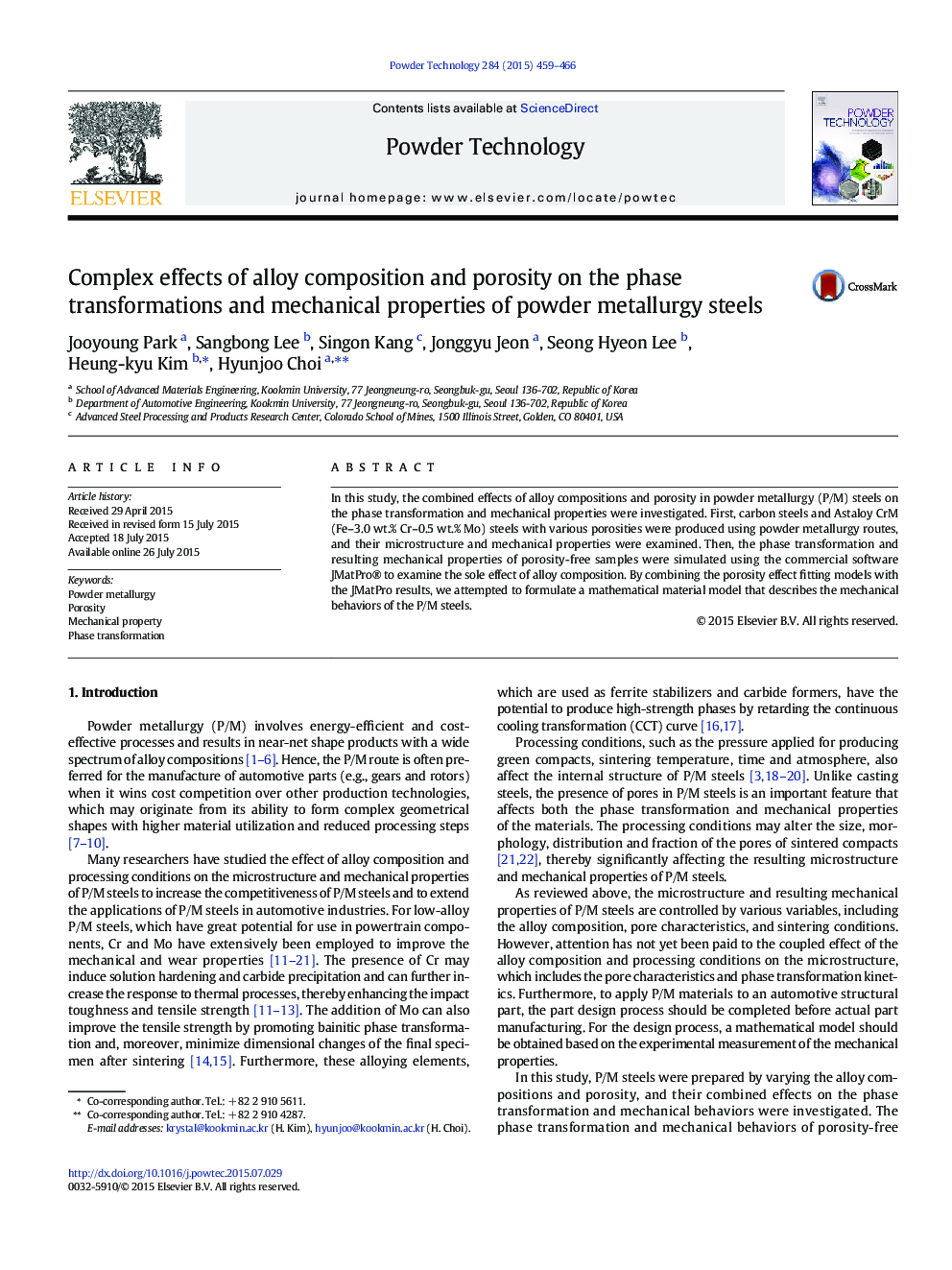| Article ID | Journal | Published Year | Pages | File Type |
|---|---|---|---|---|
| 235372 | Powder Technology | 2015 | 8 Pages |
•Composition and porosity affect phase transformation and mechanical behavior.•Strength and hardness of sintered compacts decrease with increasing porosity.•Work hardening rate of sintered compacts increases with increasing porosity.•Phase transformation in porosity-free samples was simulated by JMatPro®.•A model was formulated by combining porosity effect models with JMatPro results.
In this study, the combined effects of alloy compositions and porosity in powder metallurgy (P/M) steels on the phase transformation and mechanical properties were investigated. First, carbon steels and Astaloy CrM (Fe–3.0 wt.% Cr–0.5 wt.% Mo) steels with various porosities were produced using powder metallurgy routes, and their microstructure and mechanical properties were examined. Then, the phase transformation and resulting mechanical properties of porosity-free samples were simulated using the commercial software JMatPro® to examine the sole effect of alloy composition. By combining the porosity effect fitting models with the JMatPro results, we attempted to formulate a mathematical material model that describes the mechanical behaviors of the P/M steels.
Graphical abstractFigure optionsDownload full-size imageDownload as PowerPoint slide
